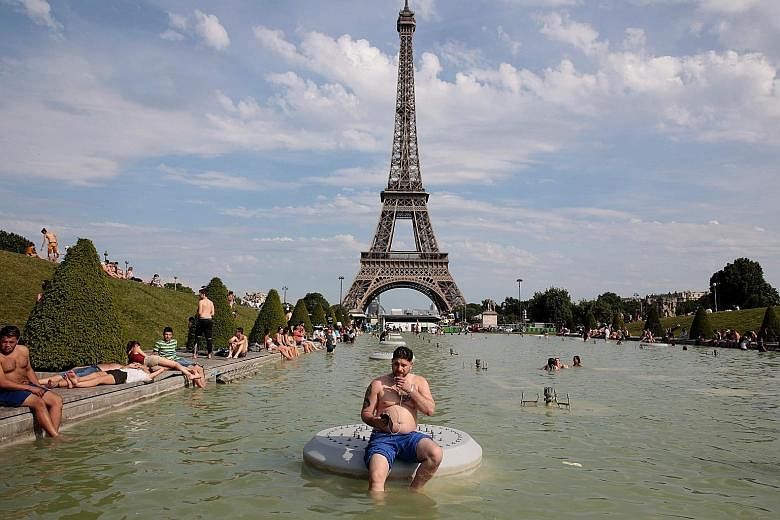OSLO • Heat trapped by dark- coloured roads and buildings will more than double cities' costs for tackling global warming this century by driving up energy demand to keep citizens cool and by aggravating pollution, scientists have said.
The "urban heat island effect", under which cities are often several degrees warmer than nearby rural areas, adds to air and water pollution and can make workers in sweltering conditions less productive, their new report said.
"The focus has been so long on global climate change that we forgot about the local effects," said report co-author and University of Sussex economics professor Richard Tol on Monday.
"Ignoring the urban heat island effect leads to a fairly drastic underestimate of the total impact of climate change," he said.
About 54 per cent of the world's population live in cities, which cover just 1 per cent of the earth's surface. Overall, the costs for cities to limit climate change, including the local heat impact, could be 2.6 times higher than without the urban heat island effect, said the survey published in the journal Nature Climate Change.
For the worst-off city, accumulated losses could be up to 10.9 per cent of a city's gross domestic product by 2100, the scientists wrote of their survey of 1,962 cities, including Tokyo, New York, Beijing, Lagos, Sao Paulo, London and Moscow.
Such a temperature spike can have dire consequences for the health of city dwellers, robbing companies and industries of able workers, and put pressure on already-strained natural resources such as water.
The projection is based on the worst-case-scenario assumption that emissions of planet-warming greenhouse gases continue to rise throughout the 21st century.
The study did not try to identify the cities most at risk, but lead author Francisco Estrada of the Universidad Nacional Autonoma de Mexico said they were likely to be "close to the tropics and with the large populations".
Some past studies have said that cities in colder climates - such as Stockholm or Anchorage - could have net benefits from warming because of lower winter heating bills. But Dr Estrada said such effects were likely to be short-lived as temperatures climb.
The report said that cities, which often set more ambitious goals for themselves than governments to tackle climate change, could limit much of the damage themselves with measures such as lighter- coloured asphalt or more trees.
New York, for instance, has a "cool roofs" plan to coat rooftops with a white reflective surface. It says black rooftops can reach temperatures of up to 88 deg C on days when air temperatures are 38 deg C.
The new study estimated that changing a fifth of a city's roofs and half the pavements to cooler versions would make economic sense and reduce city air temperatures by 0.8 deg C. The top quarter of most populated cities, in this scenario, could see the mercury rise 7 deg C or more by the century's end, said the study.
For some, nearly 5 deg C of the total would be attributed to average global warming.
Cities cover only about 1 per cent of earth's surface but produce about 80 per cent of gross world product and account for around 78 per cent of energy consumed worldwide, said the researchers.
Cities also produce more than 60 per cent of global carbon dioxide emissions through the burning of coal, oil and gas for fuel.
REUTERS, AGENCE FRANCE-PRESSE

